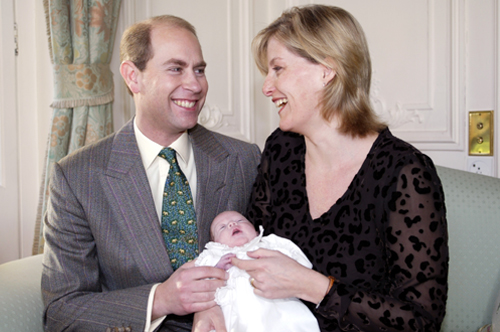
Monarchy
New Zealand
The Journal of The Monarchist League of New Zealand Incorporated
ISSN 1174-8435


Volume 9 Issue 2 May 2004

The Monarchist League of
New Zealand, Inc.
Patron: Hon Sir Peter Tapsell, KNZM MBE MBChB FRCSEd FRCS
Founding Chairman: Merv Tilsley, Esq.
Acting Secretary, 72F Ladies Mile, Remuera,
Auckland 1005, New Zealand
Website URL: http://www.geocities.com/Capitolhill/Parliament/7802
Council:
Chairman: Noel Cox, Esq., LLM(Hons) PhD GradDipTertTchg
Acting Secretary: Chris Barradale, Esq.
Treasurer: Stephen Brewster, Esq., MBA BCA CA
Councillors:
Nicholas Albrecht, Esq., MA(Hons)
Roger Barnes, Esq., FHSNZ
John Cox, Esq., LLB MNZTA
Mrs Jean Jackson
Neville Johnson, Esq.
Ian Madden, Esq., MA LLB FSA(Scot)
Robert Mann, Esq., MSc PhD
Carl Nordstrand, Esq.
Professor Peter Spiller, BA LLB PhD LLM MPhil PhD AAMINZ
League Officers:
Legal Adviser: Dr Noel Cox
Librarian and Archivist: Dr Noel Cox
Provincial Representative, Manawatu-Horowhenua: Kevin Couling, Esq.
Provincial Representative, Waikato: Professor Peter Spiller
Editor, Monarchy New Zealand: Dr Noel Cox
Assistant Editor and Advertising Manager, Monarchy New Zealand: John Cox, Esq.
Honorary Chaplain: Rev’d Canon Gerald Hadlow, LTh
Webmaster: Dr Noel Cox
Monarchy New Zealand is published by The Monarchist League of New Zealand Inc. Opinions expressed do not necessarily reflect the policy of The Monarchist League of New Zealand. Correspondence should be addressed to the Editor, Monarchy New Zealand, 123 Stanley Road, Glenfield, Auckland 1310, New Zealand. Tel: +64 9 444-7687; Fax: +64 9 444-7397; E-mail: [email protected]
Editorial
Six weeks ago the Earl of Wessex visited New Zealand for a very busy week-long tour. It was seven years since his last visit. At that time he was unmarried; now he has a wife and daughter – who were unfortunately unable to make the trip to New Zealand. The seven years has also seen the marvelously successful Golden Jubilee, and the passing of both The Queen Mother and Princess Margaret.
The Monarchist League itself was in its infancy when Prince Edward (as he then was) last visited. We have now been in existence for the best part of a decade – still a juvenile compared to the 1,000 year old monarchy, but sufficiently mature to have had some success as a low-key advocacy group.
The Royal Family has had positive media coverage recently with the announcement of the engagement of Lady Davina Windsor to Gary Lewis, a builder/renovator and former shearer. Davina, the daughter of the Duke and Duchess of Gloucester, has the title of the daughter of a duke. She would have been known as Her Highness Princess Davina of Gloucester had the Great War not led to the limitation of princely titles to more senior members of the Royal Family. Yet she is a member of the Royal Family.
While our Royal Family have for centuries been more open-minded in their choice of spouses, one might wonder what Queen Victoria would have thought of a princess marrying an part-Maori builder. The news of the engagement must give food for thought for those who stubbornly claim that the monarchy and the Royal Family is not changing with the times.
I will be standing down as Chairman at the forthcoming AGM, and will also be resigning as Editor. I wish to thank all members for their support over the last eight years, and wish you well.
Dr Noel Cox
News in Brief
The Queen’s Commonwealth Day address
Annual Commonwealth Day Services were held at Holy Trinity Cathedral, Auckland, and the Wellington Cathedral of St Paul, on Sunday 14th March.
Colonel Thurston, Honorary Aide de Camp, represented Her Excellency the Governor-General at the Commonwealth Day Church Service, Wellington Cathedral of St Paul.
The following is the Queen’s Commonwealth Day address for 2004:
The lives of many of my generation were profoundly changed by a world war fought in the name of freedom. I have often reflected with pride on the huge contribution made by the peoples of the Commonwealth to that cause of liberty in which millions perished.
In the years following the war, a succession of countries emerging into independence chose to join the Commonwealth as free and equal members. As a result, the Commonwealth became rooted in all parts of the world and developed into the modern organisation we know today.
Democracy, national self-determination, individual liberty and human rights – all these are fundamental to that which binds the Commonwealth together.
The importance of these principles was clearly in the minds of Commonwealth leaders during their discussions at last December’s summit in Abuja, Nigeria. Living up to principles is never easy. It can involve difficult and painful decisions. But the affirmation of those values provides common ground for the Commonwealth as a whole to grow stronger.
The Abuja meeting also made the crucial link between democracy and development. Democracy is important to sustained development – and underdevelopment can be democracy’s greatest threat.
Nowhere is freedom perfectly realised – and its enemies are not only those who terrorise and torture. They are also hunger, poverty, disease and ignorance. That is why it is important for the Commonwealth to do all it can to tackle these challenges directly, whether in alleviating poverty or in promoting education and health. It is also essential to strengthen the rule of law, protect democratic freedoms and build strong civil societies.
I firmly believe that if the Commonwealth is to increase its role as a force for good in the world, strengthening democratic freedoms must remain at the heart of its purpose.
Elizabeth R
Earl of Wessex in New Zealand
HRH Prince Edward Earl of Wessex visited New Zealand from the 15th to the 22nd of March. He attended functions in Auckland, Wanganui, Dunedin, and Nelson. The major purpose of the visit was to present Duke of Edinburgh Awards in Auckland (at Dilworth School), Wellington (Government House), and Dunedin (Columba College).
Prince Edward officially launched a new innovative fundraising initiative to mark the 40th anniversary of the Young New Zealanders’ Challenge of the Duke of Edinburgh’s Award on 19th March in Wellington and 21st March in Auckland.
The new initiative called the "Charter for Business" is a partnership between the Young New Zealanders’ Challenge Award Programme and private companies. It is designed to fund increased access and the expansion of the Award throughout New Zealand. The Charter for Business model has been a success in Australia, the UK and Canada where it has led to greater availability of Award programmes and the undertaking of special projects and development work.
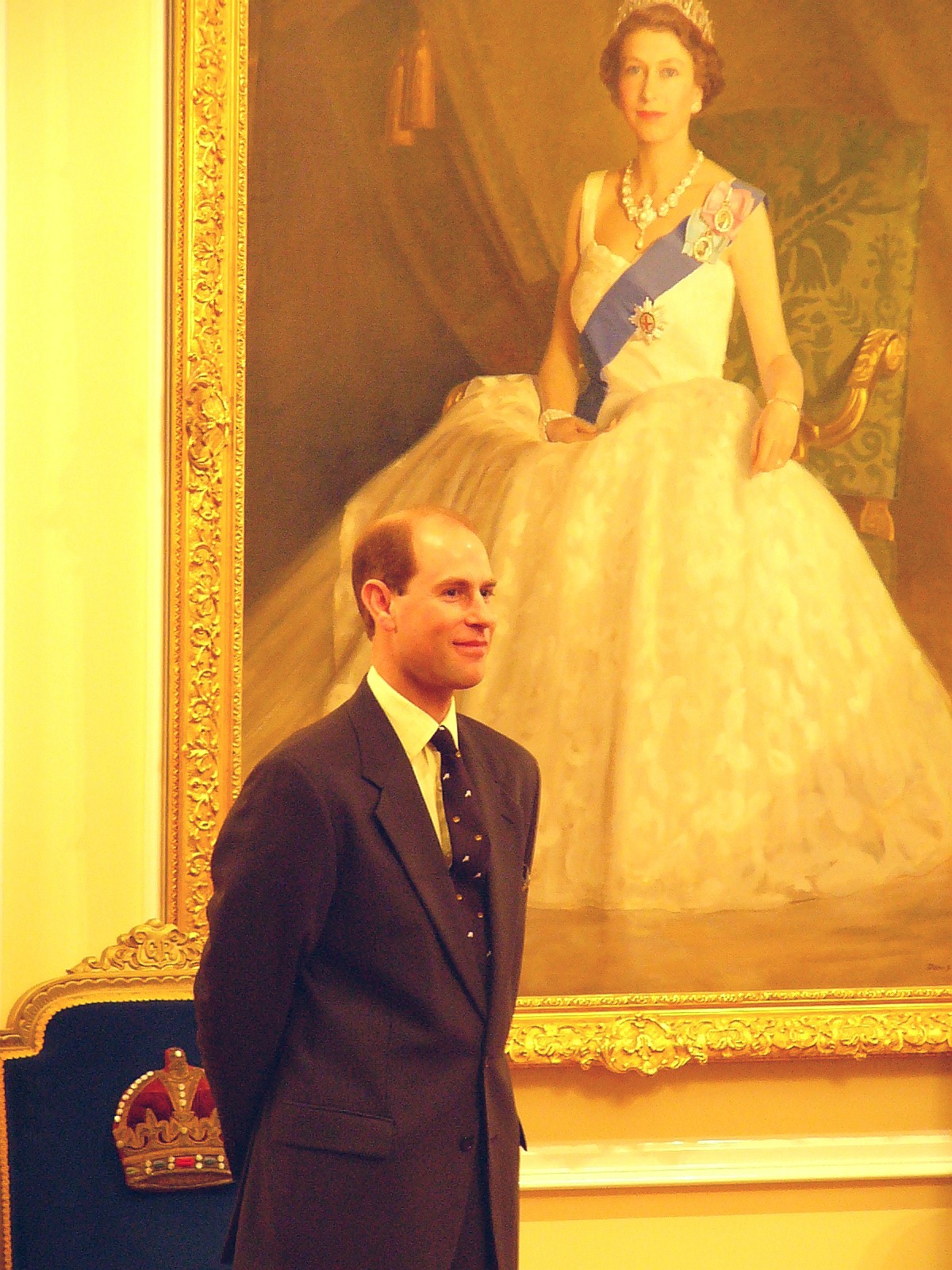
The Duke of Edinburgh’s Award was started in the UK in 1956 by HRH the Duke of Edinburgh as a self-development programme of activities for young people. The Award stresses individual achievement through a range of challenging activities enabling participants to gain self-esteem, an important step in development towards adulthood.
The Young New Zealanders’ Challenge, as it is known locally, has offered an exciting personal challenge to tens of thousands of young people between the ages of 14 and 25 since its inception 40 years ago. At present, around 5,000 young New Zealanders take up the Award each year, with a further 10,000 involved at any one time, but there are large numbers of young people the organisation is unable to reach due to funding constraints.
The name Duke of Edinburgh Award is not used as the principal title in New Zealand, but is retained as a secondary title. This is in common with the practice in those republics in which the Award operates.
Prince Edward also attended the sesquicentenary celebrations of Wanganui Collegiate School, at which he taught in 1982-83. There were receptions at Government House in Auckland, and in Wellington.
On 15th March the Earl of Wessex attended the Rotary Club’s Regional Prefects’ lunch at the Michael Fowler Centre in Wellington. Later in the day he visited Te Papa Tongarewa. He also visited ‘The Eternal Thread’ exhibition at Porirua’s Pataka Museum, and the Downstage Theatre, as part of the New Zealand International Arts Festival.
In Nelson His Royal Highness visited the seal colony at Tonga Island, a local ceramics studio, and the Abel Tasman National Park. Later in Dunedin there was a Reception for young people, hosted by Mayor Sukhi Turner, and a visit to Animation Research Ltd and Natural History NZ Ltd studios.
His Royal Highness made an unscheduled visit to the flood affected community at Waitotara, near Wanganui. He chatted to locals, and visited the Waitotara Pub, where he was invited to leave his signature on the pub wall. Prudently he signed well above flood level.
After leaving New Zealand the Earl of Wessex travelled on to Japan, which he visited as a Trustee of The Duke of Edinburgh’s Award International Foundation, 22nd March until 26th March.
Life Guards enthrall audience
The Band and Trumpeters of Her Majesty’s Lifeguards visited New Zealand in February and performed a number of concerts throughout the North Island – culminating in an appearance at New Plymouth as the highlight of the Taranaki Searchlight Tattoo 2004.
Unfortunately, one of the two New Plymouth concerts was cancelled due to inclement weather – many will remember the severe storms that hit much of New Zealand in February.
The first concert (held at the Bruce Mason Centre, Takapuna) was almost a full house and the audience thoroughly enjoyed an excellent display of military music. The evening was a credit to all the Band members, especially Major David Cresswell (Director of Music) and WO1 Darren Wolfendale (Bandmaster). The concert concluded with ‘God Defend New Zealand’ and "God Save the Queen’ – the Band had "borrowed" Leading Musician Steve Packer from the Royal New Zealand Navy Band to assist with the former.
On 29th May 1660, King Charles II was escorted by three troops of Life Guards on his public entry into London at the Restoration of the monarchy, each troop being preceded by its own Kettle Drummer and four Trumpeters. That proud occasion marked the beginning of the long association with the Sovereign that the Band and Trumpeters have maintained and enjoyed to this day.
The Life Guards are the senior regiment in the British Army, and as members of the Household Cavalry they are primarily a mounted band, including their famous drum-horses. The Band is recognised as one of the finest ceremonial bands in the world, and perform frequently at Investitures and Banquets at Buckingham Palace and Windsor Castle, State Openings of Parliament, Royal Ascot, State Visits and Processions, The Lord Mayor’s Show and at other major ceremonies where the pomp and pageantry is highlighted by great military music.
All members of the Band are given rigorous auditions, then receive further musical training at the Kneller Hall Royal Military School of Music, which All Black supporters may be interested to know is immediately next door to Twickenham Rugby Stadium. On posting to the Life Guards, Band members undergo a six-month equitation course before they can perform on parade.
At the conclusion of the second Auckland concert, Major Cresswell thanked all who had contributed to making the tour such a success, especially Bob Davis from the International Military Music Society of NZ (Tour Manager and Concert Announcer), RNZAF Base Auckland (for accommodation and meals) and the RNZN Band (for the loan of Leading Musician Packer).
Let us hope we do not have to wait another 344 years for the Band’s next visit to New Zealand!
Stephen Brewster
Royal Diary
Lady Davina Windsor to marry a New Zealander
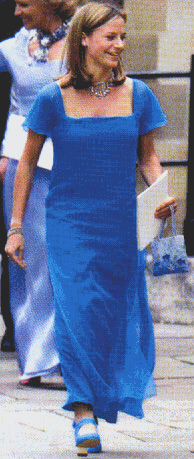
Lady Davina Windsor, the elder daughter of the Queen’s cousins the Duke and Duchess of Gloucester, is to marry Gary Lewis, a New Zealander, in July.
The wedding is to be on 31st July at the Royal Chapel, Kensington Palace.
Mr Lewis, a builder/renovator, and former sheep shearer, is 33, and is the son of Mr Larry Lewis, and Mrs Vikki Carr. He is originally from Gisborne, and is the nephew of author Witi Ihimaera. Larry Lewis, a champion shearer in the 1980s, now works on a rubber plantation in Thailand.
The couple will live in the United Kingdom.
Prince William
His Royal Highness Prince William has denied rumours he does not want to be king, in his first public comments about his future role as monarch.
The prince marked his 21st birthday last June with a fancy dress party with an African theme at Windsor Castle.
The second installment of a birthday interview with the Press Association (PA) was released to coincide with this.
William’s most significant comments were on being monarch, which he said was a very important role and one he did not take lightly.
He appeared to be stung by suggestions that he is a reluctant royal who may one day choose not to take the throne.
"All these questions about do you want to be king? It’s not a question of wanting to be, it’s something I was born into and it’s my duty," he said.
"Wanting is not the right word. But those stories about me not wanting to be king are all wrong.
"It’s a very important role and it’s one that I don’t take lightly.
"It’s all about helping people and dedication and loyalty which I hope I have – I know I have."
But he admitted there were times when he was troubled by his destiny, although he first wanted to concentrate on his studies.
He said he would not conduct any royal engagements until he had finished university.
There was praise for the Queen, a huge role model for him.
"You only have to look at my grandmother and see the amazing things she’s done," he said.
"That to me is a huge inspiration – the work she’s done and the work my father’s done and a lot of the family.
"The monarchy is something that needs to be there – I just feel it’s very, very important – it’s a form of stability and I hope to be able to continue that."

William conceded the monarchy should remain relevant to people’s lives, but said it would be "dangerous" to predict changes to it.
He emphasised the "loyalty and dedication among the family", which he hoped to continue by helping people.
The prince said he did not have a steady girlfriend at the moment, but would ask a girl out, if he thought she fancied him back.
But the unwanted media scrutiny of every female friendship was a source of irritation.
He said just one meeting or photograph could lead to the girl’s family being contacted by reporters, before joking:
"Only the mad girls chase me, I think."
He thanked the media for giving him space while at St Andrews, and promised to treat them with maturity when he left university.
In the first installment of the interview William rounded on his father’s critics.
The prince called on those who have criticised the Prince of Wales to give his father a break.
The prince was interviewed and also posed for photographs by Mario Testino – the renowned celebrity photographer who famously took pictures of William’s mother Diana.
Speaking at St James’s Palace, the prince – second in line to the throne – defended his father.
"He does so many amazing things, I only wish people would see that more because he’s had a very hard time and yet he’s stuck it out and he’s still very positive."
"He’s very happy and protective towards Harry and me as well," he added.
The prince summed up his own personal goals as he embarks on adulthood.
"My guiding principles in life are to be honest, genuine, thoughtful and caring," he said.
The prince spoke with honesty and humour, mixing boyish charm with self-assured certainty.
"I’m not an over-dominant person," he said, "I don’t go around and expect everyone to listen to me the whole time.
"But I like to be in control of my life because I have so many people around me, I can get pulled in one direction and then the other.
"If I don’t have any say in it, then I end up just losing complete control and I don’t like the idea of that. I could actually lose my identity."
He defended his "stubborn" streak, which he said was a necessary attribute to his role.
"You have to be slightly stubborn because everybody wants you for one reason or another.
"If you don’t stick to your guns and stick to your decision, then you lose control."
But William insisted he could still listen to advice, before making his own judgement.
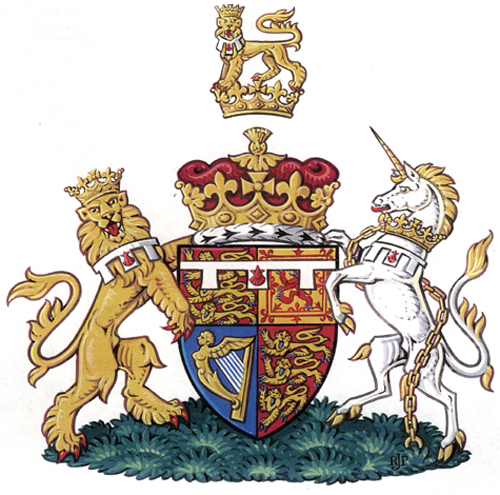
"I think it’s very important that you make your own decision about what you are.
"Therefore you’re responsible for your actions, so you don’t blame other people."
Prince William is three-quarters through a four-year degree at St Andrews University in Scotland.
He has stepped into the role of Counsellor of State with delegated powers to act on behalf of the Queen.
In this he joins his father the Prince of Wales, the Duke of Edinburgh, the Duke of York, and the Earl of Wessex.
In taking up the high office, he replaces the Princess Royal.
During the interview, the prince also talked about the influence on him of his mother Princess Diana, who died when he was just 15.
He also talked of using his position as a Royal to help others as she did.
"I was influenced by my visits to hostels with my mother when I was younger.
"I learned a lot from it, more so now than I did at the time."
"My mother used her position very well to help other people, as does my father, and I hope to do the same," he said.
And referring to his younger brother Prince Harry, 18, he spoke of their "very good relationship" saying they will always share "that common bond".
The prince talked also of his love of sport – he excels in water polo, swimming and rugby.
An Aston Villa football supporter, Prince William also revealed his love of high-speed motorbike riding.
He admitted his father had concerns for his safety as he indulges his passion, but said: "It is a risk, but as long as you’ve had sufficient and thorough training you should be okay."
His other hobbies include music.
Reply to League’s letter on birth of Lady Louise
The League received the following reply to our letter to the Earl and Countess of Wessex on the birth of their daughter:
The Earl of Wessex has asked me to thank you for your letter of 22nd February 2004, and for your kind message of congratulation on the birth of Lady Louise.
His Royal Highness has already departed for his visit to New Zealand, which he is looking forward to enormously. He sends you and all members of the Monarchist League of New Zealand his very best wishes.
Mrs Anne-Marie Fothergill,
Personal Assistant to TRH
The Earl and Countess of Wessex
The christening of Lady Louise Windsor took place at the private chapel at Windsor, on Saturday 24th April 2004. Christenings in the Royal Family have traditionally been private occasions, attended only by family, godparents and close friends (with the exception of The Queen’s grand daughter, Princess Eugenie of York, who was christened during morning service at the church of St Mary Magdalene, Sandringham, on 23rd December 1990).
The godparents chosen by The Earl and Countess of Wessex for their daughter were Lady Sarah Chatto, Lord Ivar Mountbatten, Lady Alexandra Etherington, Mrs Francesca Schwarzenbach and Mr Rupert Elliott.
Lady Sarah is the daughter of Princess Margaret, and Lord Ivar is brother of the Marquess of Milford Haven and great nephew of Earl Mountbatten of Burma (and titular HSH Prince Ivar of Battenberg). Lady Alexandra is daughter of the Duke of Fife, and a great-great grand daughter of King Edward VII. Mrs Schwarzenbach is the Australian-born wife of Swiss financier Urs Schwarzenbach.
League News
Membership Drive
The Monarchist League is intentionally not a mass-membership organisation, but we do aim to have sufficient numbers to give us credibility. To this end it is necessary to promote membership from time to time. The best method of obtaining new members has proven to be by word of mouth.
We encourage members to seek out new people to join the League. We are offering members an incentive. Any current member who recruits three new members before December will have their 2004-2005 subscription refunded.
Three copies of the membership application form are enclosed with this journal. Please write your name on the top of the form, so that we know who was responsible for recruiting the new member. When the Membership Officer receives three such forms your membership subscription for 2004-2005 will be refunded or recorded as paid, as appropriate.
Annual General Meeting
The 2004 Annual General Meeting of The Monarchist League of New Zealand Inc will be held at 3 pm on Sunday 23rd May 2004 at the Headquarters of the Navy League (Auckland Branch), 19 Tamaki Drive, Orakei, Auckland (just before Kelly Tarltons). This will be preceded by afternoon tea, from 2 pm, for which a donation of $5 is requested. There is no charge for those attending the AGM only. A notice of the Annual General Meeting is enclosed with this journal.
Candidates are now being sought for election to the Council and for office holders. Nominations, which are to be in writing, signed by the nominee and another member of the League, should be received by an officer at least three days prior to the Annual General Meeting. The Secretary can arrange for nominations to be signed where a member does not have ready contact with another member. Nominations can also be sought from the floor.
Overseas News
Former Queen Juliana dies
The former Queen Juliana of the Netherlands died 20th March, at the age of 94. She succeeded Queen Wilhelmina in 1948. After her own abdication in 1980 in favour of her daughter, Queen Beatrix, she was known as Princess Juliana. She was a Lady of the Garter from 1958, and also held the Royal Victorian Chain (1950).
The Duke of Edinburgh was the Special Representative of Her Majesty The Queen at the Funeral on 26th March.
Queen Juliana is survived by her daughters, Queen Beatrix, Princesss Irene of Bourbon-Parma, Margriet, and Christina, and by her husband, Prince Bernhard.
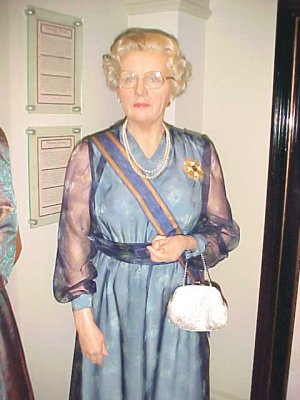
Royal visits
Princess Alexandra 1971
Princess Alexandra, and the Hon Angus Ogilvy, visited New Zealand in 1971.
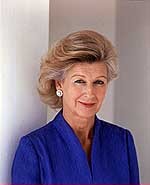
The visit was designed primarily to celebrate Auckland’s centennial. The Princess attended the Auckland Centennial Ball, a Garden Party at Government House, and a banquet at Auckland War Memorial Museum hosted by Sir Dove-Meyer Robinson, Mayor of Auckland. She also visited Napier to fulfill a long-standing invitation from there (attending the Lion’s Ball), and had an official luncheon in Wellington.
Princess Alexandra was the only daughter of Prince George Duke of Kent and Princess Marina Duchess of Kent. Along with her elder brother, Prince Edward Duke of Kent, the Princess was taught in private classes near Coppins, the family home in Buckinghamshire. In 1947 she became a pupil at Heathfield School, near Ascot. She was the first princess to attend school. Princess Alexandra trained as a student nurse at the Hospital for Sick Children, Great Ormonde Street, London.
She married in 1963 the Hon Angus Ogilvy (now the Right Hon Sir Angus Ogilvy), second son of the Earl of Airlie. Sir Angus is a company director, and also a member of the Advisory Council, The Prince’s Trust, the Council of Business in the Community, and a trustee of The Prince’s Trust.
The couple’s children are James Ogilvy, and Marina Ogilvy. James Ogilvy worked in an investment bank in the City of London, and is now a publisher. He married Julia Rawlinson, who worked in the Public relations department of Garrards, the Crown Jewellers.
Marina Ogilvy married Paul Mowatt, a photographer. The couple had two children, and have since divorced.
Princess Alexandra is President of the Royal Commonwealth Society for the Blind (Sight Savers), and the Royal Humane Society, as well as Vice-Patron of the Royal Overseas League. Her interests include music, reading, tapestry, outdoor recreation including swimming, ski-ing, and riding.
She was Colonel-in-Chief of the Wellington and West Coast and Taranaki Regiment until the re-organisation of the infantry arm of the New Zealand army in 1964.
Oath of allegiance
As mentioned in the last issue of Monarchy New Zealand, an oaths working group led by the Ministry of Justice will report back to the Government in June, and public submissions were expected to be sought in early 2005, though it was recently announced that the process will be accellerated. Recent statements by the Minister of Justice have suggested that the focus may, as feared, be upon removing or relegating to a lesser importance the oath of allegiance to the Queen. I would suggest that if this is so then the review is not a purely technical revision, but rather a reform which has significant constitutional implications.
The Monarchist League believes that the oath of allegiance should be preserved for all new citizens, and for public office-holders who currently take the oath of allegiance. This is appropriate to emphasise the loyalty of new citizens to the constitutional order of their adoptive country, and to reinforce the non-political and non-partisan nature of public office. The wording of the oath of allegiance reflects New Zealand’s current constitutional arrangements, and should not be altered unless these are altered, except perhaps to improve its completeness (as will be explained).
Whilst the tendency for the last hundred years has been for the use of an oath of allegiance by office-holders to decline, it has become more common for new citizens.
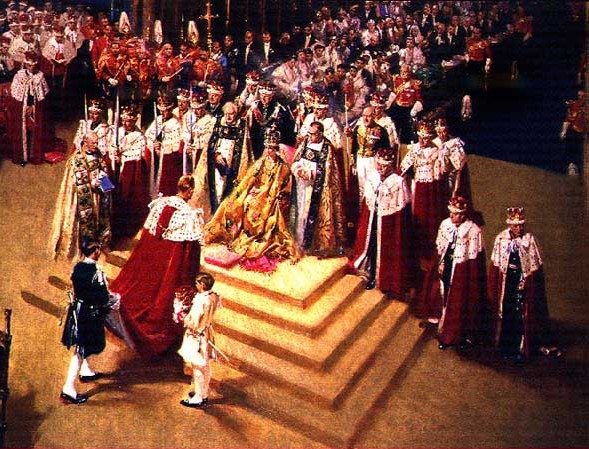
The Citizenship Act 1977 provides that persons granted New Zealand citizenship may be required to take the oath of allegiance. New citizens who were subjects of the Queen in other countries would now have to take the oath of allegiance, unless exempted. It had been thought desirable that the oath be taken in all cases, but administrative complications ruled this out as a practical proposition at that time.
From 1st July 1996 those required to take the oath have included individuals who were subjects of the Queen in another of her realms, who were formerly exempt from the requirement to take the oath of allegiance in public, and until 1979 completely exempt.
The move was said to result from a debate on immigration, and to have been promoted by the United Party. About 3,500 people a year now have to attend ceremonies run by local councils. These ceremonies provided an opportunity for new citizens to make a public commitment to their new obligations.
The form of the oath is prescribed by law. Section 11 and the First Schedule of the Citizenship Act 1977 provided the following oath:
I, [Full name], swear that I will be faithful and bear true allegiance to Her Majesty Queen Elizabeth the Second, by the Grace of God Queen of New Zealand and Her Other Realms and Territories, Head of the Commonwealth, Defender of the Faith, and Her heirs and successors according to law, and that I will faithfully observe the laws of New Zealand and fulfil my duties as a New Zealand citizen. So help me God.
This oath is similar to the oath of allegiance now required only from judicial officers – judges, justices of the peace, coroners, sheriffs, and certain others.
Certain words were removed by section 2 and the Schedule of the Citizenship Amendment Act 1979. These were "by the Grace of God", "and Her Other Realms and Territories, Head of the Commonwealth, Defender of the Faith, and".
The current form used is:
I, [Full name], swear that I will be faithful and bear true allegiance to Her [or His] Majesty [specify the name of the reigning Sovereign, as thus: Queen Elizabeth the Second, Queen of New Zealand,] Her [or His] heirs and successors, according to law, and that I will faithfully observe the laws of New Zealand and fulfil my duties as a New Zealand citizen. So help me God.
This attempt to provide a form which does not require updating with a change of Sovereign has resulted in clumsy wording. It is also inappropriate and legally doubtful that the royal style and titles used in the oath of allegiance should have departed from the official form set down in the Royal Titles Act. It was apparently inspired by a desire to emphasise the New Zealand nature of the oath, though this can only be inferred as the Bill was not debated in Parliament.
If any alteration is to be made to the oath of allegiance, it should be to correct the current wording, and not to alter its nature. I would accordingly suggest a return to the 1977 style:
I, [Full name], swear that I will be faithful and bear true allegiance to Her Majesty Queen Elizabeth the Second, by the Grace of God Queen of New Zealand and Her Other Realms and Territories, Head of the Commonwealth, Defender of the Faith, and Her heirs and successors according to law, and that I will faithfully observe the laws of New Zealand and fulfil my duties as a New Zealand citizen. So help me God.
This is preferable to the current usage in that it uses the correct royal style, and the "by the grace of God" which is traditional usage. The use of "So help me God", and "by the Grace of God", is appropriate for an oath.
The oath of allegiance is after all an oath, not an affirmation, and thus inherently religious in nature. Those of an atheist or agnostic persuasion, or non-Christian, have the option of making an equivalent affirmation.
I would also add that I hope that this review will not become yet another example of republicanism by stealth, and that the oath of allegiance is not abolished, or "republicanised" by removing any reference to the Queen. Any oath or affirmation should be a serious commitment, particularly an oath of allegiance.
The oath of allegiance reflects the reciprocal relationship of Queen and people, one which also parallels the relationship between Crown and Maori represented by the Treaty of Waitangi. A declaration of allegiance to New Zealand, the Government, or to the Prime Minister, would be a poor substitute.
An oath of loyalty to New Zealand would be constitutionally meaningless, impressive though it might appear to be in a shallow way. The concept of such an oath is at odds with a national culture which finds saluting the flag – or even flying the flag – difficult.
Do we want to emphasise New Zealand’s independence by following Australia, and denigrating the constitutional role of the Queen and the Crown – one of the few unifying elements in this country which is above racial and political controversy?
There may have been some changes overseas, but I do not think that we should emphasise our independence by following the example of one or two other countries, which have quite different circumstances. Nor should we emphasise independence – whatever that means – by denying our royal heritage. The Queen is Sovereign of all New Zealanders, irrespective of their ethnic origins.
The oath of allegiance was simplified in 1979, and remains a short and dignified statement of loyalty to the constitutional order. It involves affirming loyalty to the Queen of New Zealand. This does not mean that we do not owe allegiance to New Zealand, for the oath is to the Queen in her constitutional position as Sovereign of New Zealand. This is consistent with oaths in other monarchies.
It may be that the oath of allegiance for new citizens in Australia will no longer refer to the Queen. But this was a change motivated by the republican campaign then raging in that country, and was bitterly fought by supporters of the constitutional status quo.
The nature of the oath of allegiance is better understood in the uniformed services. The police oath is a good example of why the current oaths are important. Constables swear to uphold the Queen’s peace. This ancient concept is based upon the idea that the Crown maintains and preserves law and order.
The oath has considerable importance, reflecting the constitutional role of the Queen. It also emphasises that the constable’s duty is to the law, and not to the Government or any sector or interest group. In his address to the Golden Jubilee parade in Auckland almost two years ago, the Commissioner of Police drew attention to the policeman’s oath to uphold the law in the name of The Queen, and emphasised its practical as well as symbolic importance.
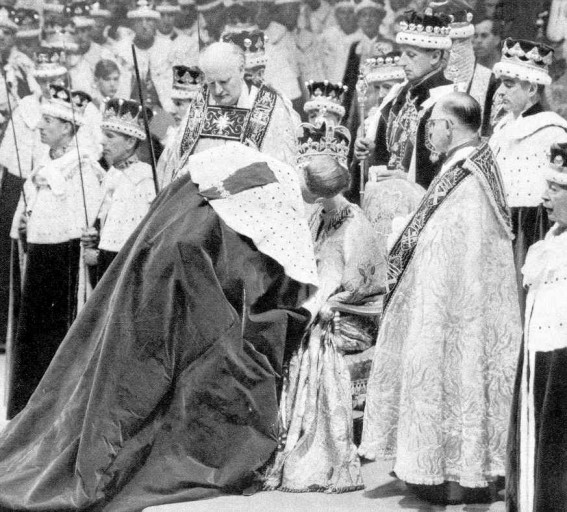
Public office holders, and members of the Armed Forces, also swear an oath of allegiance. This is not understood as a pledge of purely personal loyalty (though this forms a part), but rather as loyalty to the office of Sovereign, and to the constitutional system which it represents. This is far more meaningful than a vague pledge of loyalty to the country, which has been used in a number of countries to justify military coups. Loyalty is to the Sovereign, who holds the supreme constitutional office in trust for the people, not to the government-of-the-day. Governments come and go, but the Crown remains.
Oaths are taken seriously by the armed forces, who appreciate that their allegiance is to the Queen of New Zealand, not to the government-of-the-day, though it is ultimately from this that they receive their orders. Like the Commissioner of Police, the Chief of Naval Staff, speaking at the Golden Jubilee parade in October 2002, stressed the importance of the relationship between the armed services and the Crown. This helps to preserve the non-political nature of our armed forces.
New citizens ought also to take an oath of allegiance to the existing constitutional structure. This structure may be changed by law – as the oath recognises – but we all owe our allegiance to the constitutional government of this country.
Politicians also serve New Zealand in the Queen’s name – it is the Queen’s Government of which they form a part.
Removing references to the Queen from the oath of allegiance could undermine the political neutrality of public services, while being divisive and arguably offensive to Maori, and to others who understand and appreciate the constitutional relationship between Crown and people. Altering the oath of allegiance should be seen as a symbolic act of profound constitutional significance, and ought to occur only after mature and careful consideration, and with a clear popular mandate.
Noel Cox
Royal Residences past and present
Norfolk House
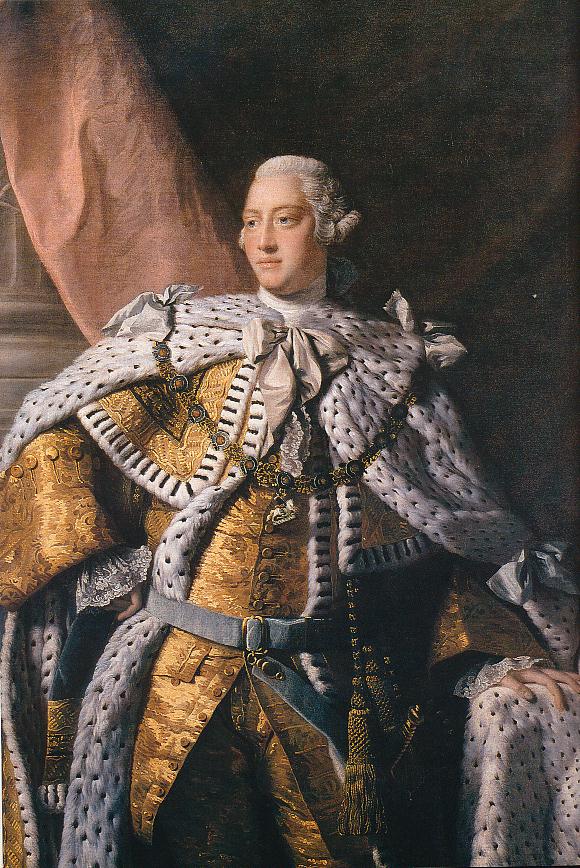
This house, at 31 St James’s Square, London, was built in 1722 for the Duke of Norfolk. It was a royal residence for a short time only, when Frederick Prince of Wales, father of King George III, lived there 1737-41, after his marriage in 1736 to Princess Augusta of Saxe-Gotha, daughter of Frederick II Duke of Saxe-Gotha. King George III was born in the house, which was offered to the royal couple by the 9th Duke of Norfolk.
The family moved to Leicester House in 1742, and it was to remain the prince’s home until his death nine years later, and that of his widow until her death in 1764.
The original Norfolk House remained in the ownership of the Dukes of Norfolk until 1938 when it was pulled down, and the site became an office building. This was to serve as headquarters for the Supreme Allied Expeditionary Force under General Eisenhower in WW2.
Part of the interior of the eighteenth century house still survives, in particular the Music Room, designed by Giovanni Battista Borra for the 9th Duke. Restored and redecorated to its original scheme of pure white paint with gilt, carved woodwork, after having been in storage, the room is now displayed in the Victoria and Albert Museum.
Contact details for provincial representatives
Provincial Representative, Manawatu-Horowhenua: Kevin Couling, Esq., 23 Engels Road, SHANNON 5555, tel: (06) 362-7333; mob: 025-241-2162; fax: 06- 362-7132; email: [email protected]
Provincial Representative, Waikato: Professor Peter Spiller, tel: (07) 855-0565; e-mail: [email protected]